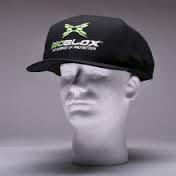Those of you who have ever checked out Off the Bench’s ‘About’ section will know that for most of my life I’ve had the privilege of calling myself a pitcher. I pitched at Vassar College, and before that in high school and middle school, in various summer and AAU leagues, at myriad baseball camps and clinics, and even in Little League. Over all that time I have thrown more innings than I could possibly account for. I’ve been hurt, sure, but I’ve been lucky–I can remember only one instance where a line drive off the body caused me any damage, and it only left me hobbling for a few days.
Pitching is a dangerous business. In addition to the normal elbow/shoulder problems we associate with pitchers (of which I’ve had many, culminating in shoulder reconstruction in 2009), pitchers are perpetually in harm’s way. For each of my countless innings, I was on a mound no further than 60’6″ from a hitter who had undoubtedly been coached since T-ball to hit the ball “right up the middle.” Hang around a high school practice and you’ll hear more of the same: “stay in the middle of the field,” “drive it back through the box,” or perhaps the most telling, “spin his cap.” It is not surprising that pitchers get hit from time to time.
In the last six seasons, 12 men in the MLB alone have taken liners to the face/head. JA Happ fractured his skull last year; Brandon McCarthy nearly lost his life, requiring brain surgery in 2012; Juan Nicasio suffered a brain bleed, fractured skull, and fractured C1 vertebrae in 2011. This list goes on, including, most memorably, former Red Sox pitcher Bryce Florie, whose 2000 run in with a baseball was the most gruesome thing I have ever seen on a field.
It is impossible to say how many pitchers have had careers or even lives altered by liners off the head at the various levels of baseball.
With the backdrop of my personal experiences and the memory of the damage baseballs have inflicted, I have been closely following MLB’s experimentation with padded baseball caps. Meant, obviously, to protect vulnerable pitchers, the challenge has been balancing durability and effectiveness with ergonomics. (And there have been, er, stylistic concerns.)
This week, baseball announced that its latest effort, developed by isoBlox, will be legal for use in regular and postseason games. While this is a huge step in player protection, it is only a first step. The new hats are enormous–a half inch larger than normal in the front and an inch bigger on the sides–and look downright absurd (think DaftPunk meets Mitchell & Ness flat-brim). The outlandishness of the new hats has been a major aspect of the media drumbeat since the gear was announced. Many have been lampooning the new design as too impractical and too absurd looking to ever catch on at all. They are so startling and unbecoming that even McCarthy says that he doubts he will wear one this season.
But all the backlash totally misses the point. These hats aren’t about this generation of pitchers so much as they are about the next generation, and the generation after that. Before batting helmets became standard issue, they must have looked ridiculous too. They must have been seen as cumbersome and intrusive, something too absurd looking to ever catch on. Now, as pitchers have become bigger and stronger and fastballs faster, it would be considered suicidal to even think about stepping into the batters’ box without one. Many hitters even take BP in a helmet without a second thought. In the future, might it be as crazy to deliver a pitch without protective gear?
Even if pitcher’s caps remain optional in the MLB, and even if none of the current big leaguers opt to use them, it doesn’t mean they have to be optional for younger players. Little Leaguers have slower reaction time than their heroes, and while the ball might not come of a 12 year old’s bat quite as hard, 12 year old brains are also more fragile. If players start to wear padded caps early in their careers the stigma will vanish, as will the need to “adjust” to a new cap. If this has to be a gradual process, so be it. In the long run, the sport will be better for it. Hook ’em while they’re young.
Over time, there will undoubtedly be a reconciliation of function and fashion. Technology will allow the caps to slim down while protecting against faster and faster line drives. As it becomes–for lack of a more tasteful descriptor– less ugly, players will wear it with more frequency. And if policy hasn’t outstripped social pressures, as big leaguers sign on so will kids. With any luck, someday soon the padded cap will become as commonplace in baseball as the batting helmet.
-Max Frankel

















